Identify Common Trees in Vermont
5 min read / March 18, 2022
Our website uses cookies to improve your experience. To learn more about how we use cookies, please review our privacy policy.
Can't find what you're looking for? Please contact us.
Vermont is covered with trees. Over 75 percent of the state is forested! Its estimated that there are 3.4 billion trees in the state. Vermont lies in a climate transition zone between the northern boreal forests and the southern deciduous forests, making our forests very diverse. While maple, birch, and beech are some of the most common species, there are so many more. Let us help you learn how to identify some of the trees you might see on your next walk.
We Vermonters love our maples. Sugar and red maple are two of the most common trees in our forests and learning just a couple key characteristics can help you tell them apart.
We’ll look at leaves, buds, and bark so you will be able to distinguish them in all seasons. We’ll also check out striped maple — a very unique maple tree.
Red maples are really red! Their buds, flowers, leaf stalks, and fall colors are all reddish. They are also one of the first trees to turn color in autumn.
While red maples and sugar maples have very similar leaves, to tell the difference, pay attention to the margins of the leaf. There are teeth along the edge of a red maple leaf (see photo).
Compared to red maple, sugar maple leaves have smooth edges. You can also distinguish sugar maple leaves from red maples by looking at the dips between the lobes. Those on a sugar maple are u-shaped, while dips between the lobes of the red maple are pointy and more v-shaped.
Striped maple is a slow-growing tree that rarely gets over 20 or 30 feet tall. It’s often found growing as a shrub. In this image you can compare striped maple (yellow leaves) with red maple (red leaves).
Although striped maple leaves have toothed leaf edges like red maples, striped maple leaves have three lobes that are shallow; some say they are shaped like a goose’s foot.
Another way to tell the difference between these and other maples is the size of the leaves – they are large and can be up to six inches.
One way to tell the difference between sugar maples and red maples to to look at their buds in early spring — this is handy when there are no leaves yet.
The buds on a sugar maples are pointed and brown (left) while red maple buds are round and (easy to remember) red! Red maples are also one of the earliest trees to flower in spring.
While the bark of a stiped maple is the real giveaway, we thought it would be helpful to show a striped maple bud for comparison to other maples. The smoothness of these buds distinguishes them the most. They are long, pointed, and red, and many animals find them delicious!
This is where it gets hard.
Bark on young, fast growing trees is smooth and gray, but the texture of older trees is rougher. As the trees age, the bark breaks up into strips, called plates.
Sugar maple plates are much thicker and sturdier than red maple places, which are narrow and long and sometimes have a circular pattern.
This photo shows young sugar maple bark on left and old sugar maple bark on right.
Here are two examples of red maple bark. You can see how much the trees change as they age.
Compared to the older maple above, you can also see a distinct pattern in the plating of the bark on the red maple.
Striped maple is a truly unique tree. It is one of the only trees that can photosynthesize using its green-striped, green bark.
In a sea of browns and grays, the snow-white of gray (far left) the warm gold of yellow birch (center) and paper birch (right, back) really liven up the bark palette of Vermont’s forests.
Not that we are recommending you go out and start peeling bark, but how the bark peels is one way to tell the difference between these species.
Gray birch bark is chalky to the touch and comes off in short threads. Yellow birch bark comes off in small, thin pieces reminiscent of rice paper, and paper birch bark peels off in sheets.
Yellow birch is known for its peeling golden-colored bark. For a birch its a large tree (up to 100 feet) and longer-lived than others.
When it’s younger, the bark will peel away in papery strips. Here you can see this, along with a yellow birch bud. All birch buds are pointy, the yellow and paper birch buds are the pointiest.
If in doubt about whether a tree is a yellow birch, you can try scaping a section of a stem. If it smells a bit like wintergreen, it is likely a yellow birch.
As the yellow birch tree gets older, the curling bark will appear more shredded.
When the tree gets even older (about a foot in diameter) the bronze curls transition into a thick, platy outer bark that can have cracks.
Paper birch is closely related to yellow birch, so what are some ways to tell them apart?
The paper birch is a small-to-medium sized tree (unlike the larger yellow birch). When young, paper birches have brownish trunks that turn white once they are about 10 years old. When peeled, the white bark reveals an inner bark that is a whitish-pinkish-creamy-orange color.
When paper birch bark peels, it comes off in large sheets compared to the more shredded bark of a yellow birch.
Paper birch don’t live as long as yellow birch, but when they are mature, the bark changes yet again.
In this photo you can see the bark has turned thick and blocky. You can also see a paper birch bud, which looks fairly similar to a yellow birch bud. You can tell the difference between them by the more pronounced lenticels (little white spots) on the paper birch twigs.
Grey birch is a smallish tree, usually reaching 20-30 feet. The bark is greyish white and is most easily confused with paper birch.
One way to tell the difference is that gray birch has dark triangles below where branches sprout from the trunks (see photo). It also doesn’t readily peel as other birch bark does.
While birch buds can be a bit hard to tell apart, you will notice that that the grey birch bud tips are more rounded than those of the paper and yellow birch.
Gray birch buds are widest at the middle, and tapering at each end.
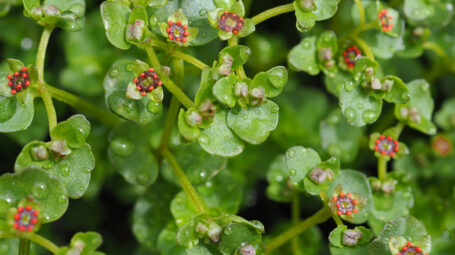
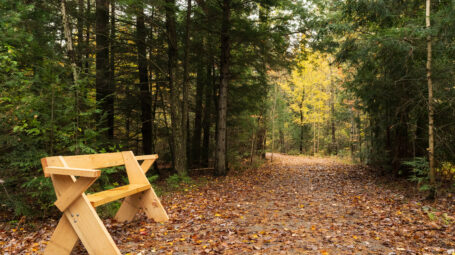
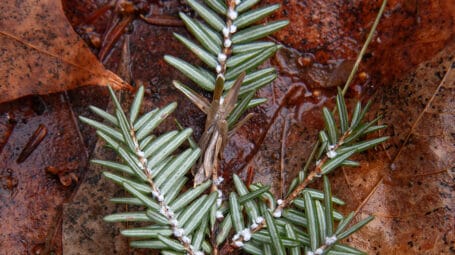
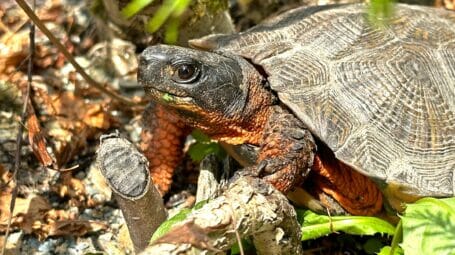
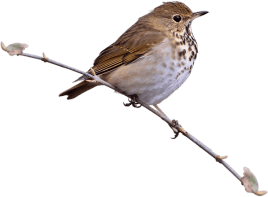
We generally send two emails per month. You can unsubscribe at any time.
We usually send two emails per month. You can unsubscribe at any time.